As Othon Cinema, we are very happy to have this cinema-filled conversation with director Sylvia Schedelbauer and to present her first interview published in Turkish. As two close friends, we watched her film, Labor of Love a few years before we made this interview with Schedelbauer and exchanged our thoughts on this film with great admiration. Now, it is a great honor for us to have an interview with her on our page that we have founded. We thank her for carefully answering our questions down to the smallest detail. We are grateful to Dilara Şengül, who had the greatest effort in publishing this interview in Turkish and who brought you Schedelbauer’s first interview in our language with a comprehensive translation.
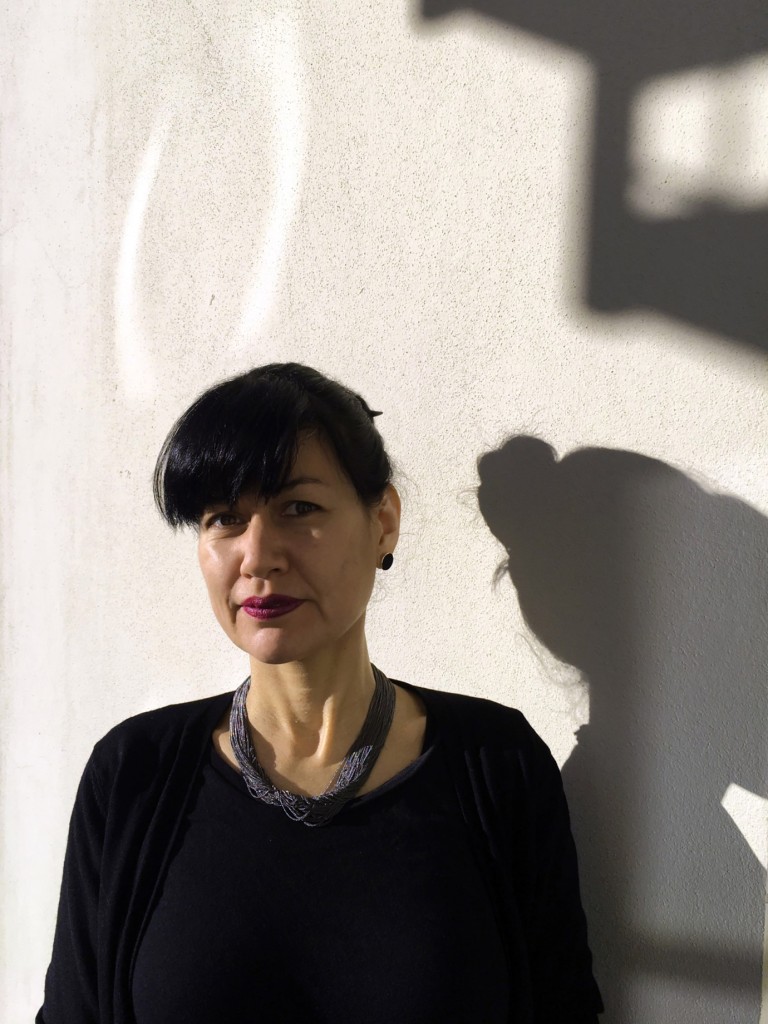
Welcome! Thank you very much for kindly accepting our invitation to this interview. First of all, how’s life going for you nowadays?
I’m fine thank you, soaking up the sun that has finally come out after what felt like an especially long winter. I’m also working on different next films, so that’s exciting.
There were usually intervals of several years between your previous movies. However, in the year of 2022, two movies of yours met the audience in the same year. How did this instance affect you and your life? Could you tell us about the process?
The piece In the Beginning, Woman Was the Sun (that recently screened at Istanbul Film Festival), was commissioned for the 60th anniversary of the Goethe Institute Tokyo, an anniversary that coincided with those of the Japanese New Wave and the Oberhausen Manifestos. Asked to take account of what these manifestos may mean from today’s perspective, I decided to focus on women, as they were underrepresented in both contexts. Specifically, the piece turned into a personal homage to Japanese suffragettes and feminists. It is an acknowledgement and appreciation of their struggles, past and present, to strive to create a more equal society.
The Goethe Institute wanted me to premiere the work simultaneously at the International Short Film Festival Oberhausen and at the Goethe Institute Tokyo. When they approached me, around February 2022, I was still working on finishing the other short released in 2022, Oh, Butterfly! So the two months until the premiere at the end of April were incredibly intense and also quite stressful.

In the Beginning, Woman was the Sun (2022)
Your films could generally be described as poetic, poetic manipulative, stereoscopic, flicker. What does it make you think that your movies are described by these expressions?
I myself describe my films as poetic: my films negotiate the space between broader historical narratives and personal, psychological realms mainly through poetic manipulations of found and archival footage. This is a description that I wrote almost 20 years ago, and oddly it still makes sense. I’ve often thought of reworking this statement, but each time decided that it was still acceptable.
There are many approaches of the poetic in film, especially in the history of the avant-garde, and I was deeply influenced by various historical works. Employing a poetic audio-visual language allows me to explore and experiment with themes without confining the interpretation of my films. Rather than expecting an audience to understand exactly one thing that I am trying to say, I invite the viewer to make their own meaning of the films. I’d like to quote an anthropologist friend of mine, Omar Kasmani, who recently wrote to me (and expressed it perfectly): “By relying on the poetic, I was hoping for not having to explain. In its economy of words, poetry stirs more than it steers; evokes rather than explains.” I couldn’t agree more.
There are at least three aspects as to why I have used the stroboscopic / flicker form. At first, it was strictly an economic strategy, I needed to find ways to use low resolution standard definition (720x480dpi) digitizations of 16mm footage. Slowing down, blurring the images and adding black frames turned out to be one way to use the material and make it look aesthetically acceptable. I also wanted to experiment with using film fragments, cut-aways and accidental shots. Then, for quite a while, I felt there were infinite possibilities in exploring the flicker technique, and I strove to develop my own artistic cinematic language.
Rather than staying with the hard cut flicker that is common with historical flicker films, I began interweaving images that go back and forth between each other progressively. Over the course of time, the overall architecture of the films became more and more complicated.
But to me, the flicker technique is not just a structural tool but also a form for meaning. In each of the films I made, I assigned the flicker different symbolic significance. I won’t talk about every film, but here are a few examples of what the flicker form has meant to me: on one hand, it’s a metaphor for human consciousness / subconsciousness / unconsciousness. Then, the flicker works with liminal and subliminal spaces that lend themselves to symbolic meaning or interpretation —for example I have also employed the flicker as a symbol for mnemonic processes. How human memory in particular is fragile, prone to gaps, is only capable of retaining small random pieces, like a sequence of various images intercut with black frames, which symbolize the gaps. Of course, history is also full of gaps, leaving out, even erasing the experiences of marginalized communities. I’m speaking in very broad terms, and but these are some examples of why I have stayed with the flicker technique for a few years, besides developing the artistic cinematic language, and exploring its potential.
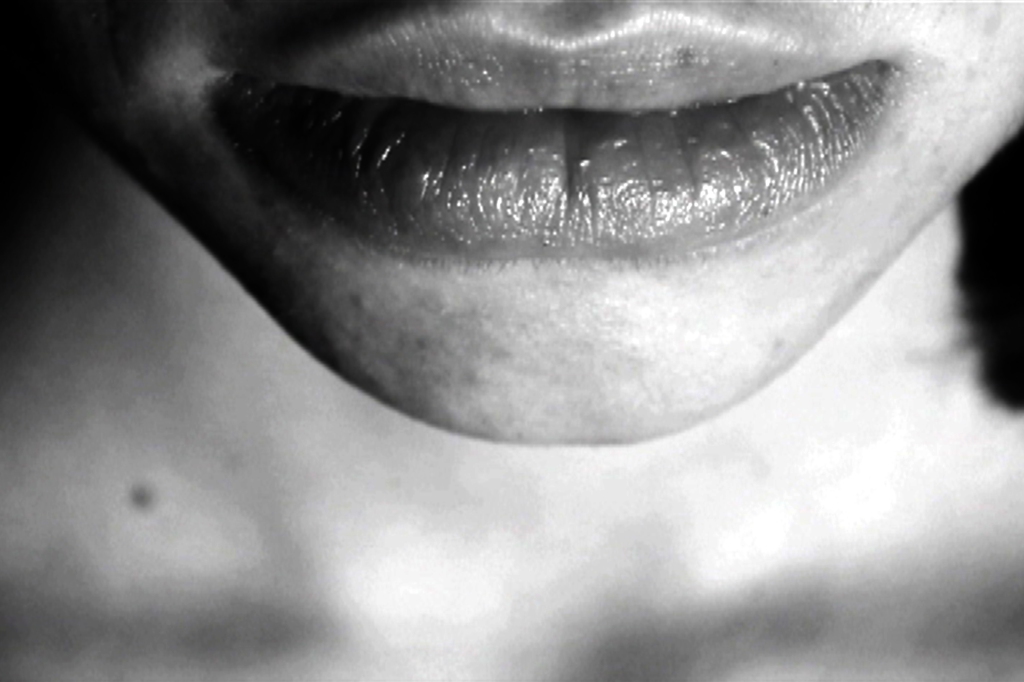
Sea of Vapors (2014)
We see that your cinema can have an intense meditative, hypnotic, and dreamy impression on audience. Do you think that the real power and aim of cinema lies here?
The aim and power of cinema… that’s asking quite a lot. I don think there is one truth or one answer to that. I’ll give a more general response. I firmly believe that films can make a difference. Films can communicate, they can connect. Films can produce a different mode of knowing. Films can change the fabric of one’s thinking. Films can have (proxy) agency. Watching films can feel like a deeply intimate encounter, like meeting someone on a very personal level.
If my films manage to achieve any one aspect that I just mentioned, if someone can connect with my films, and if my films touch someone, if they stir an experience, or shift something in them, or even make a small difference to them, then perhaps something worked out.
As to the dreamy, psychedelic or hypnotic: these are effects that flicker filmmakers have historically long experimented with. When speaking about the history of flicker, one must of course mention the dream machine, built by a few artists* in the 1960s– which is not a film but a kinetic art object; it is “a stroboscopic flickering light art device, that produces eidetic visual stimuli.”*
Many experimental filmmakers who worked with flicker in the 1960s and 1970s like Tony Conrad, Paul Sharits, Ken Jacobs, Peter Kubelka, Toshio Matsumoto, and later Takashi Ito (and others), were intensely experimenting with –and exploding– liminal boundaries. Some artists were interested in demystifying the cinematic apparatus, others tried to see if an alternate state of consciousness could be evoked through flicker, tried to produce a waking “dream state”, or tried to see what hallucinogenic agency there might be in flicker, and again others experimented with 3D effects. Almost all filmmakers who experimented with flicker had a strong political approach. To me, this fact was always very important, that flicker wasn’t just a formal, structural or aesthetic exercise, but that most of the filmmakers were very politicized and used flicker as a radical approach to convey their message. This is something I tried to take away: I didn’t want my films to be merely poetic or aesthetic experiences, but I tried to imbue the structural form with meaning.
Over the course of years, from film to film, I moved away from the flicker in its strictest form. I tried to create complexity by adding multiple layers of images, various zooms, fades, superimpositions, a lapping effect (images seem to lick and roll across the screen like liquid), a vortex effect (the images slowly seem to swirl in and around themselves) and simultaneities (the viewer may feel like they being drawn into the image and at the same time being pushed out of the image). I’ve used various frequencies and over time, I’ve slowed down the rhythm so much that I’d say my recent films aren’t strictly flicker films anymore: the effect is closer to a throbbing or pulsating of the images rather than the clear-cut strobe that is so well known and associated with the art form.
*A few Artist: Brion Gysin, William S. Burroughs and Ian Sommerville made the dream machine.
In your movies we come across found footage and specifically designed abstract images outside of the classical filmmaking techniques. Is the reason behind you prefer this such way rather than classically framed shots, the obligation of constructing the imaginary world that is in your mind, or is it a rejection of the classic patterns and standardization?
I love narrative films, whether they are arthouse, small independent productions or big box office –yes, even mainstream– films. I love and respect documentary forms. It was never my intention to make strictly narrative or documentary films so I can’t say that I ever rejected certain classifications, genres, or standards.
I studied fine arts at the University of Arts Berlin, with a focus on conceptual photography and visual culture / post-colonial / feminist studies. I came to experimental film through a side door, I never studied film or went to film school. I am self-taught when it comes to moving images. I’ve always identified more as an artist residing between the film and the art worlds. Perhaps my editing process feels closer to that of a painter or sculptor than the three-partite process of pre-production / production / post-production. That is not to say that the timeline was a canvas, or a chiseling stone. But I superimpose image sequences to make them blend into each other like a moving abstract painting, if you will. I take away image sequences if they are jarring or if they counteract the effect I am trying to produce, like chipping away parts of a stone, in order to give shape to a cinematic expression.
What drives you to include those images you use in your film? After all, it should be harder to connect with the image that you did not film. What is the exact thing that makes you say ‘This is it!’ when you see an image?
I love historical archival footage, shot mid-century, or even older, not only because they are hauntingly beautiful, but because they reveal glimpses of a time before mine. Perhaps I should talk about how I arrived at specializing in making found footage films. When I made my first film “Memories,” I didn’t even know that found footage film was an experimental film genre. Sadly, when googling found footage today, the term has been assigned to a specific horror genre born in the digital age –this is not what I am talking about. I am talking about an experimental filmmaking practice that originated in the historical avant-garde. The first known found footage film was made by Joseph Cornell in 1936, titled Rose Hobart.
Anyway, after I discovered experimental found footage films, I fell deeply in love with archival films in all their various forms and formats. Most of the footage I have used is taken from orphan films:* newsreels, educational, amateur but also narrative films that have been abandoned by their owners; films that lack copyright holders and/or commercial value. To use footage that has been abandoned –for whatever reason– means to recycle images that have otherwise lost their purpose and value. Using found footage can be seen as a political gesture, to not just produce new images in a world that is oversaturated by images (and image production); but to re-use, re-cycle, and re-contextualize old images, and to give these (old) pre-existing images new meaning, and a new life.
As to how I choose images: it usually depends on how they speak to me. It’s a very intuitive process. Sometimes I find an image that I immediately love and know that I must use, even if I don’t know how to use it. Sometimes it percolates for a few years in the back of my mind until I know what to do with it. Other times I choose images because I am collecting certain motifs in order to build a gesture, and yet other times I pick an image because of a specific context it was produced in, and of course its content.
Recently I’ve used stock footage, and I have started using footage that I self-produced on Super8 film, or even digitally. I usually let the new footage rest for a while, so that when I begin working with it, it feels like found footage. Since my first film Memories was already a found footage film of sorts –almost all the material came from my family album, shot not by myself but by others–discovering found footage practices really inspired me and felt like a natural progression.
It never felt important whether I shoot the footage myself, or if someone else has shot it. What matters more is what I can do with the images, and what I can make them say. How I can get the images to interact, blend, amalgamate in order to express something entirely different from the various backgrounds that the images have came from.
Memories, one of your first movies, solely consists of a text read over still photographs. Although we see the preference of voice-over on the images in your other movies, too; the images differ from your other movies. Is it an obligatory result of Memories being a film about memory and past, or is it because of the experiments being done on the cinema image and the desire to discover a different path?
I made my first film “Memories” when I was a student at art school. It came out of a theoretical seminar on war photography. We were reading Susan Sontag’s “Regarding the Pain of Others” when the professor spontaneously asked the class “How do you see yourself in relation to war?” This question became the trigger and catalyst for making my first film. Memories was my version of a family history, and primarily used photos taken from the family archive. I wrote the text in one session, and made the film within ten days, without ever reediting text, images or sound. After presenting it for the first time, I was confronted with various issues in sound and content, and felt terribly restricted by the use of verbal language. After showing it to a public in Germany and abroad, each time the film screened I’ve felt deeply uncomfortable –and I still do– for the perceived mistakes in my own account, and for the misconceptions and biases that strain my own perspective.
I became hyper-aware of how much weight spoken language can carry, and that it can be hard to find appropriate expression for certain issues. I felt confined by verbal language, and decided to find different, non-verbal ways to address my personal quest and questions from the first two films. The themes that I’ve explored in succeeding films include history, memory, transnational or transcultural identity, closeness / intimacy and distance / remoteness. But also quests and journeys both literal but also internal.
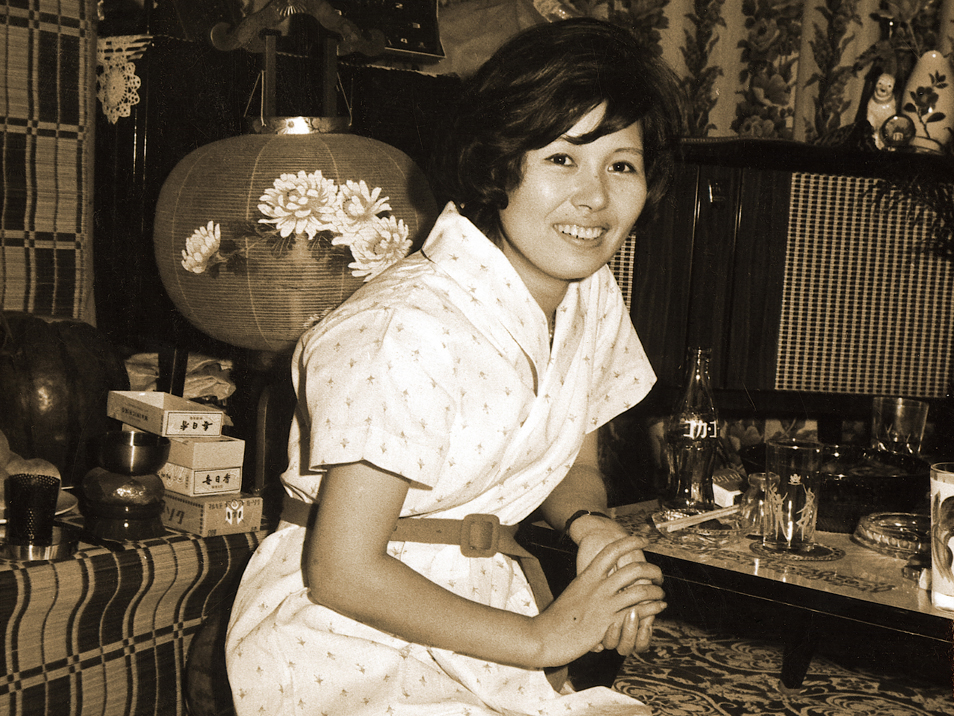
Memories (2004)
There is a special structure in your use of sound and music as well, and the sound design of your movies has an intense and powerful impact. In this context, what do you pay attention to in your preferences regarding the sound and what is the effect of these preferences on your movies?
I’ve been deeply invested in exploring the sensory agency of image and sound. I’ve collaborated with sound artists who allowed me to use their sounds, but the soundtrack is usually as heavily cut up, edited, superimposed and patched together as the picture track is. I go back and forth between editing the image, the sound, back to the image, then sound, and so on —the soundtrack develops in the process of making the film. As with the overall effect of the film, I hope to seduce an audience into letting the images and sounds submerge them, as if walking into a lush, magical forest; or swimming in an ocean and feeling a wave wash over.
Although Labor of Love (2020), can be seen as an organic result of your previous movies, still, changes are noticeable in regard to the image. How did this change and perhaps experiencing a new path find an expression in you?
For each film I made, my approach to “the flicker” was different, and as I already mentioned, with each film the strobe frequency got slower, while at the same time I experimented with different layerings and their effects. It was a continuous process, and with each film I added more complexity to the editing. For Labor of Love, I wanted the images in the film to dissolve into each other and into abstraction. I felt that was fitting because it’s a film about love, or, about a feeling of nowness, of intensely experiencing the present moment, which could be said is effortless when experiencing love, especially when falling in love.
There were visual themes that I wanted to blend together. There are images that show specific organs of a human body –some of which are involved in producing feelings of love: the brain, nerves, neurons, synapses, but also of blood cells, and images that look like the inside of veins. Then there are images of nature: trees and branches, blades of grass, butterflies and bees. There are images of water, a beach, small and large waves lapping, swelling and crashing. Somewhere, deeply embedded within the layers of these image sequences, intentionally buried and made invisible –so literally subliminal– there are images of two faces kissing. And another, perhaps more visible, close up of a woman.
Of course I can only put that much into the work, hoping that some audiences catch something of it in their viewing experience. So far, gleaning from the feedback I have received, it seems to have worked. Some people thought the film was about ecstasy in general and about female ecstasy in particular, others thought it was about transcendence, and again others felt the film had something to do with divinity / faith. This all works for me, and so far all responses to the work have made sense in the larger framework of love.
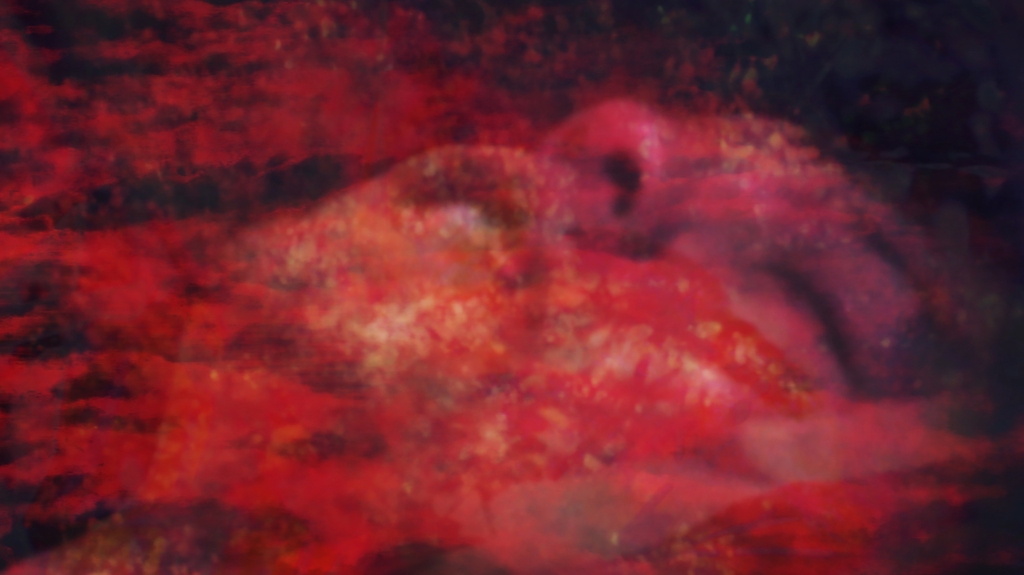
Labor of Love (2020)
We think that your cinema, in terms of both form and meaning, proceeds around quests and journeys. Especially in your latest movies, the concepts of both time and space become vague. What would you like to say about this? Also, can it be said that these quests have a side that is spiritual, metaphysical and transcendent?
Questions around transnational / transcultural identity have been important to my work since my first two film essays. These questions have remained important to me throughout my practice. Sometimes, they are translated rather conceptually, other times they are embedded metaphorically. Sometimes they take the back seat entirely, but I have been actively and independently researching this (Western-Japanese) history ever since I made my first film in 2004.
Our world is –more often than not– organized in binary strata, and we currently live under the concept of nationhoods. So for people like me, whose parents came from vastly different parts of the world, there are a few pressing existential questions. Where am I allowed to reside? Am I allowed to be both? Am I accepted as multiple? Am I allowed to take the best of both countries and cultures, and move freely between the two? There is no straightforward or simple answer to these questions, because not every country allows membership of multiple nationalities. For the most part, freedom of movement is an illusion reserved for the privileged few. Anyway, a common expectation has been to stay, in one place, either, here, or there, and just be one or the other.
So this push and pull, this here or there, this either-or, the black or white, and even then or now –it is these binaries that I strove to collapse in my flicker films. That worked quite well visually with the flicker technique, through the dissolves, transitions: the impossibility to see and grasp where one image* ends and where another begins. That is how I conceptually or symbolically tried to counter, deconstruct, and collapse the many binaries imposed on us.
I broke down the boundaries between individual images: in the early flicker films, every single image always dissolved into an altered version of itself, i.e. the same duplicate image. In later works, the superimpositions became so complex that every frame bleeds into the other, resulting in a multitude of images that collectively continue to dissolve into another, always are in the process of becoming something else.
I know that the themes that I mentioned above are not at all obvious in my flicker films. But since you asked, I’m sharing what flicker has meant to me, and what my thoughts have been. Life is a journey, and perhaps that notion that I kept looking for something, my continuous research, my personal quests came through in different, and very indirect ways. I am very interested in psychology, and the way identity forms and evolves. I’m very happy if a viewer feels like a film of mine is taking them on a journey, or if an audience associates the spiritual, metaphysical, or transcendent with some of my films.
* Footnote from Schedelbauer: When I say image in reference to flicker, then I mean a still frame.
We know that there are several breaking points in the historical progress of experimental cinema. Do you suppose that there is a possibility of this kind of a movement in experimental cinema today? And, how do you see the future of experimental cinema?
I believe that as long as people continue making experimental films, there is always potential for new discoveries, new voices, new expressions and, yes, more breaking points. I am referring to the various pockets of experimental filmmaking in self-organized film labs, associations and collectives, internationally, not just in the obvious places in the anglophone West or in Europe. The film labs meetings make these activities more visible.* Sometimes these pockets of activity boil down to a handful of people, sometimes even just to just one or two individuals.
To me, it’s really inspiring to see more and more experimental filmmakers coming from various backgrounds, including the Global South, who are making films. Colectivo Los Ingrávidos from Mexico are a really great example for artists making heavily experimental films, exploring their own themes, having their very own political stance –and even a manifesto– while referencing and quoting so many historical works in their practice, and expanding the tradition with their idiosyncratic methods. Payal Kapadia, a filmmaker from India, who has shown at the Cannes Film Festival, has definitely been inspired by experimental film practices in her very lyrical work. Sohrab Hura, also from India, is arguably represented more in the art world than the film world, has also heavily been influenced by experimental film traditions. Sky Hopinka is a Native American (Ho-Chunk Nation / Pechanga Band of Luiseño Indians) filmmaker, who is prominently represented in both the art and film worlds, also expands various experimental film practices with his very idiosyncratic film language.
I feel comfortable saying that I make experimental films. However, here in Germany, there is a contentious notion around the term “experimental film.” It is often dismissed as a historical category that ended in the late 1970s, or disputed as being unspecific and vague. In a way one could compare the use of the term “experimental film” to the use of the term “feminist.” Sometimes it is more contentious and seems to completely go out of fashion, and then it has its comebacks and suddenly everyone is fine using the term. Currently, experimental film seems rather out of fashion, in other words, everyone wants to say they are making art –no one really wants to say that they’re making experimental films.
Experimental film has historically always been marginalized, but at this point in time, perhaps experimental elements have seeped into the mainstream and can be found everywhere: in the art world, in big film productions, and of course in online virtual spaces. Take the celebrated Hollywood film “Everything Everywhere All at Once.” Would anyone call that an experimental film? Probably not. But does it borrow from experimental film history and heavily use elements that were explored by experimental film artists that came before? I’d say most definitely yes. I could turn on any series on Netflix, and see elements, editing styles and formal expressions especially in the title sequences that are inspired from the history of the Avant-garde, and from experimental film. This usually happens in the title sequence, but sometimes also in scenes depicting dreams, memories, flash backs, etc.
So would I say that experimental cinema has a future? Of course! Will it be easy to localize experimental film in one genre, in one space or place? Maybe not. Will there be filmmakers and artists who carry forth the traditions of the varied practices? I definitely think so!
Your films are in many film festivals selections. That naturally leads to an increasement in the number of the audiences that your movies can reach; but still, do you think that your movies meet with enough audience? What do you think about the approach of the festivals to your cinema, and to current experimental cinema?
My films are best experienced in a large cinema space, on the large screen, with loud sound. This also works in a gallery or art space, as I have discovered. What is most important, however, is the collective viewing experience. There is something to be said about seeing a film together with another person, a group, or even with strangers. The experience can be quite different from that of viewing something alone, at home. Films work differently. I think the best films can be seen multiple times, because each time something else reveals itself. But for me, the best place is still the cinema, where people get together and experience films together. In a world where cinema culture is in steep decline (many multiplexes in the center of Berlin have shut down in the past five years), refusing to show work online can also be seen as a political act.
Of course this creates exclusions, it excludes viewers who live in places where the work isn’t easily accessible. I am aware of that. I’m slowly getting used to the idea of online platforms, and I have made exceptions. Perhaps sometime soon, in the near future, I will come around. But I will probably always prefer collective viewing situations to isolated individual, private viewing situations.
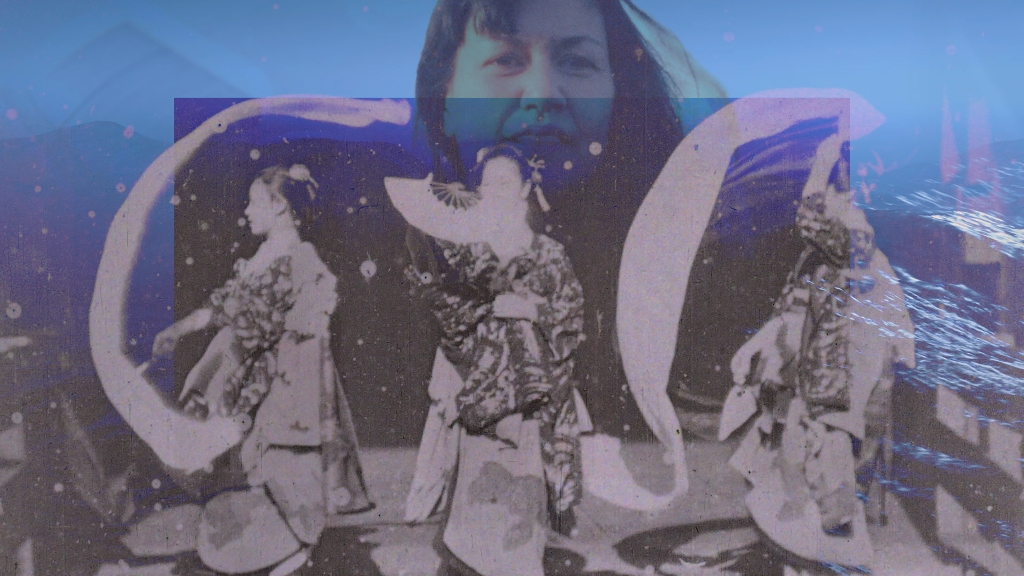
Oh, Butterfly! (2022)
We think that your cinema has a progress that is always renewing and non-repeating. For your future films, do new ideas and images already emerge in your mind, or does this process totally develop on the way?
I think the progressive unfolding is something I developed very deliberately. It is always my intention to move from one cinematic articulation or space or chapter to another, whether that’s expressed through geographic space, or architectural space, or internal, emotional spaces; or from one visual theme –such as color spaces– to another.
When my flicker films attempt a renewal of sorts, that is to say when one image blends with other images, when multiple image sequences result in continuously being in the process of becoming something else, then that is symbolic for the way I see human consciousness at large, or human development in general: we are always in the process of becoming.
But I think I am done with making flicker films for now. I think the existing work forms a kind of a closed chapter. That’s not to say I’ll never make another flicker film, I might return to this in the future. But for the time being, I’m embarking on a new journey, and am returning to using verbal language, and perhaps an essayistic style. I guess I’ve come full circle, and let’s see where this new path leads me.
Your interview will be published in Turkey for the first time which is quite exciting for us! Lastly, if there is anything you want to tell the audience in Turkey and the readers of Othon Cinema, we would love to hear that.
It’s my honor and pleasure to do this interview with Othon Cinema, their friends and networks. As I mentioned earlier, I am very inspired to see pockets of interest, activity and production in various corners of the world. I hope one day I will be able to be in Istanbul to present my work, and to engage with audiences in person!
Thank you for all of your answers. It is very precious for us to have this interview with you. Farewell until another day that we can talk about cinema at length.
Interviewers: Enes Serenli, Mert Mustafa Babacan
Translator: Dilara Şengül
Endless thanks to Hasan Doğuyel for his support during the production and translation of this interview.